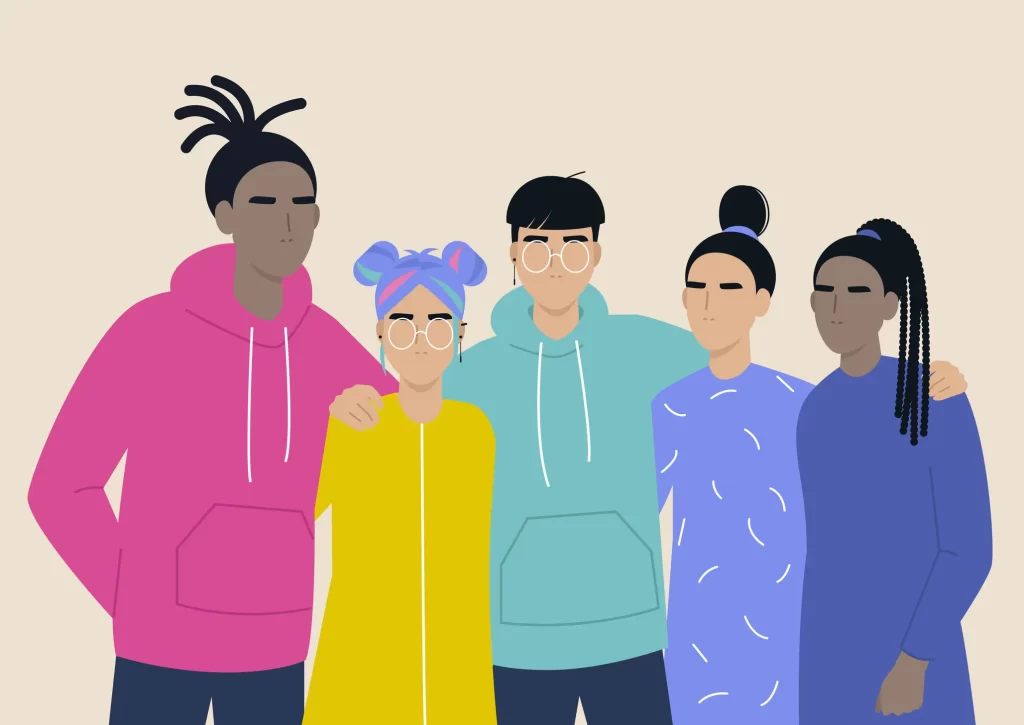BOSTON, August 3, 2022—A study published today in Pediatrics, using a large national dataset of adolescents in the U.S., provided evidence against the notion that adolescents in the U.S. come to identify as transgender due to “social contagion.”
The study also found that the percentage of teens openly identifying as transgender or gender diverse (TGD) did not increase between 2017 and 2019. Additionally, contrary to past research with smaller samples, teens assigned female at birth were not overrepresented among TGD adolescents in the U.S. It is the largest study to date to examine the controversial hypothesis that more adolescents who were assigned female at birth have identified as TGD because of “social contagion.” The study adds important new knowledge to the evolving field of transgender health care and ongoing public debate of legislative measures regulating access to gender-affirming health care.
“The hypothesis that transgender and gender diverse youth assigned female at birth identify as transgender due to social contagion does not hold up to scrutiny and should not be used to argue against the provision of gender-affirming medical care for adolescents,” said study senior author Dr. Alex S. Keuroghlian, who directs the National LGBTQIA+ Health Education Center at The Fenway Institute and the Massachusetts General Hospital Psychiatry Gender Identity Program.
Researchers used data from the 2017 and 2019 Youth Risk Behavior Survey to explore the hypothesis known as “rapid-onset gender dysphoria” (ROGD), which posits that young people begin to identify as TGD for the first time as adolescents rather than as prepubertal children and that this identification and subsequent gender dysphoria are the result of social contagion. The ROGD hypothesis further asserts that youth assigned female sex at birth are more susceptible to social contagion than those assigned male sex at birth.
In “Sex Assigned At Birth Ratio Among Transgender and Gender Diverse Adolescents in the United States,” researchers examined data reported by 91,937 adolescents in 2017 and 105,437 adolescents in 2019 from 16 states that participated in the national Youth Risk Behavior Survey. The data refute the ROGD hypothesis in the following ways:
- The total percentage of TDG adolescents decreased from 2.4% (2,161 TGD adolescents out of 91,937 overall) in 2017 to 1.6% (1,640 TDG adolescents out of 105,437 overall) in 2019. This decrease in the overall percentage of adolescents identifying as TGD is incongruent with the ROGD hypothesis.
- Between 2017 and 2019, the sex assigned at birth ratio of TGD adolescents shifted toward more adolescents assigned female at birth, which would initially appear to support the ROGD hypothesis. (In 2017, the ratio of those assigned male at birth compared with those assigned female at birth was 1.47 to 1; in 2019, the ratio of those assigned male at birth compared with those assigned female at birth was 1.16 to 1.) However, the shift in sex ratio was driven by a decrease in the proportion of those assigned male at birth openly identifying as TGD, which further undermines the ROGD hypothesis. The percentage of adolescents assigned female at birth decreased from 2017 to 2019.
- The ROGD hypothesis asserts that youth are drawn to come out as TGD to avoid the stigma associated with being a sexual minority or because being TGD will make them more popular among their peers. Yet rates of bullying victimization and suicidality were higher among TGD youth as compared with their cisgender peers, including their cisgender sexual minority peers. Both findings are incongruent with the notion that some youth openly identify as TGD in an attempt to flee the stigma of being a sexual minority or because being TGD will make them more popular among their peers.
The ROGD hypothesis, first published in 2018, immediately gained influence in public policy debates with coverage by publications ranging from The Economist to Science. This past June, Florida’s Agency for Health Care Administration referred to reports citing the ROGD hypothesis as justification for a new policy implemented this past June prohibiting the use of Medicaid funds for gender-affirming health care. In July, the popular children’s book author J.K. Rowling tweeted to her over 13 million followers that gender-affirming health care harms adolescents.
Yet the 2018 study popularizing the ROGD hypothesis was based on surveys completed by 256 parents with no input from TGD youth. Parents were recruited from three websites, two of which are anti-transgender. One, 4thWaveNOW, describes itself as a “community of people who question the medicalization of gender-atypical youth.” The tagline for the second site, Transgender Trend, is “No child is born in the wrong body.”
“The idea that attempts to flee sexual minority stigma drive teenagers to come out as transgender is absurd, especially to those of us who provide treatment to TGD youth” said study lead author Dr. Jack Turban, incoming Assistant Professor of Child & Adolescent Psychiatry at The University of California, San Francisco. “The damaging effects of these unfounded hypotheses in further stigmatizing transgender and gender diverse youth cannot be understated. We hope that clinicians, policymakers, journalists, and anyone else who contributes to health policy will review these findings.”
“Sex Assigned At Birth Ratio Among Transgender and Gender Diverse Adolescents in the United States,” is available online here.


